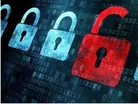Low key cyber protections that have big results

As more and more Australian firms are realizing, cyber criminal activity is going up and there’s no respite in sight. Either a company protects itself proactively, or it becomes a victim. There is no avoidance, just a matter of timing when a company will get hit.
Right now the most critical attacks are coming from organized groups, as opposed to intrepid individual hackers. These groups use a variety of methods for penetration, from digital to in-person theft of information which, when combined with other activities, opens up a treasure trove of vulnerable data to steal and resell.
Physical Defenses
For physical intrusion companies have two options after locking down the physical doors to the office: either hire active security guards who check anyone coming in, or install a card-pass security system where only known employees and partners have a security card to open access to an office. Many firms are implementing both choices simultaneously. The harder a physical penetration of an office is, the more likely a hacker or cyber team is to pick an easier target instead.
Proactive Training
There are plenty of choices for firewalls, anti-virus and hardware routers. However, the majority of data breaches occur because of people being sloppy with their access rights, passwords and company materials in their possession. Organisations that invest in proactive training of staff and partners see a big drop in weak points when people are constantly reminded that they are responsible for keeping a company protected. So behavior and IT sensitivity training should never be overlooked as an effective tool against cyber attacks.
Hire a Breach Tester
While there are plenty of software tools advertised as the best cyber defense in a box, real time identification of weaknesses allows a company to focus efforts where hacks are most likely. A number of good tester consultants are available for all businesses sizes, and can make active efforts to penetrate a company and show where it's not protected. This information can be far more invaluable for remedies and focused efforts than a general prevention software program alone.
Use Monitoring Network Alarms Heavily
Most digital hacks and breaches identify themselves by unusual usage or sudden spikes in data transfer, especially among "authorized users." Advanced networks are bolstering their monitoring side via active alarms and response cutoffs when such activities occur. This approach combines a pairing of digital monitoring with human decision-making, allowing faster shutdown of vulnerable assets and smarter defenses when a hacker changes methods midstream.



